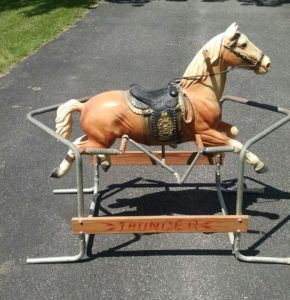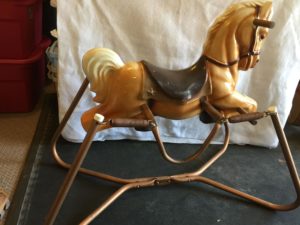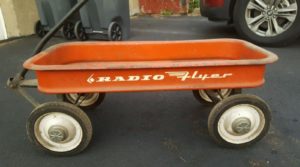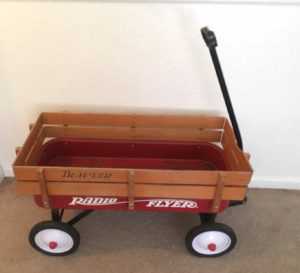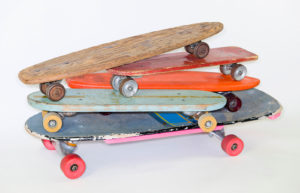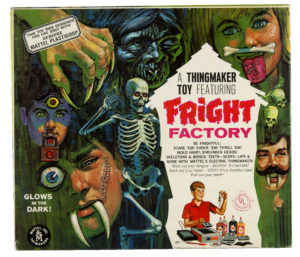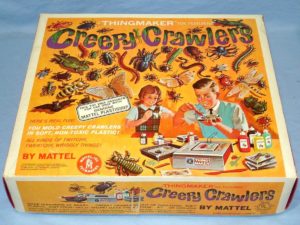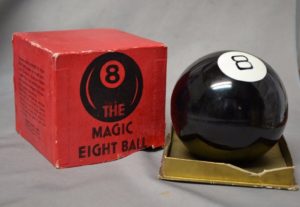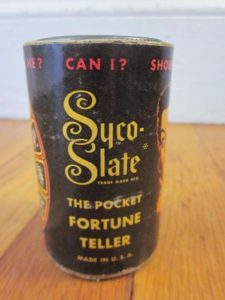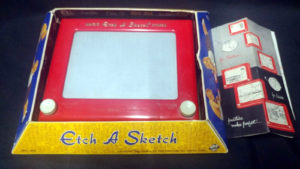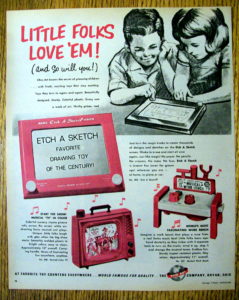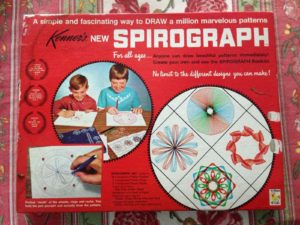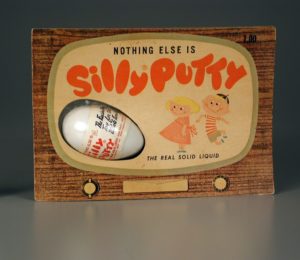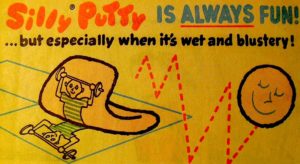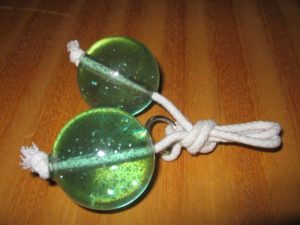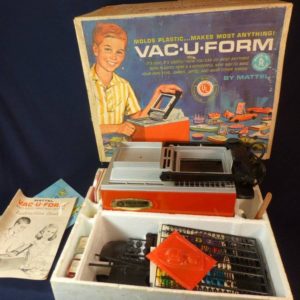
You want to keep a kid absolutely entertained? Give him (or her) something they can make their OWN toys with.
That was the premise of the Mattel Vac-U-Form. It was a very sophisticated little manufacturing system which would allow kids of the 60’s to create their own plastic molded toys, using the very same process that produces bathtubs, windshields, and countless other everyday items these days.
The Vac-U-Form used plastic sheets that were heated via the same mechanism that would later power the Fright Factory, i.e. a hot oven that would make modern-day ambulance chasing, mass-media advertising shysters drool with delight. The sheets would be drawn by manually creating a vacuum over molds that would allow kids to create some amazingly cool toys and gewgaws.
My memories of the Vac-U-Form were solely of the cool name and the fact that my first best friend’s older brother had one, or so I thought. Then I watched the featured YouTube commercial and I recalled the trademark line “What can you do with a Vac-U-Form?”
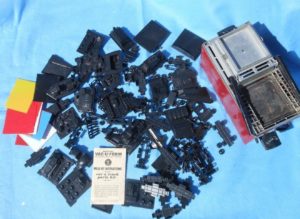
The fact is that you could do an amazing variety of tasks. Built-in extras allowed you to make miniature signs with included letters, a glider that would launch with a rubber band, a cool little race car, put-the-balls-in-the-holes games like you might find in a Cracker Jack box, and, most stupendous of all, YOUR OWN CREATIONS.
You could take modeling clay, mold it into a positive mold, and draw the heated plastic over it to create anything you wanted! Such power in the minds of creative youngsters no doubt launched many a successful engineer and artist.
The Vac-U-Form was aimed at a more sophisticated youthful demographic than mine. What I mean by that is that my buddy’s older brother (probably ten) could handle it. But seven-year-old Ronnie Enderland was more suited for the aforementioned Fright Factory.
It was kismet that someday I would attain Vac-U-Form-worthy wisdom, but alas, the product ceased being manufactured before I ever had a chance to get my hands on one. Ergo, I had to settle for chemistry sets.
So here’s to yet another creative, fun, slightly dangerous toy that our parents didn’t buy for us until we were mature enough to handle it. If we burned ourselves, it was a valuable lesson to be learned, not an excuse to call a sleazy lawyer.
(sigh)
